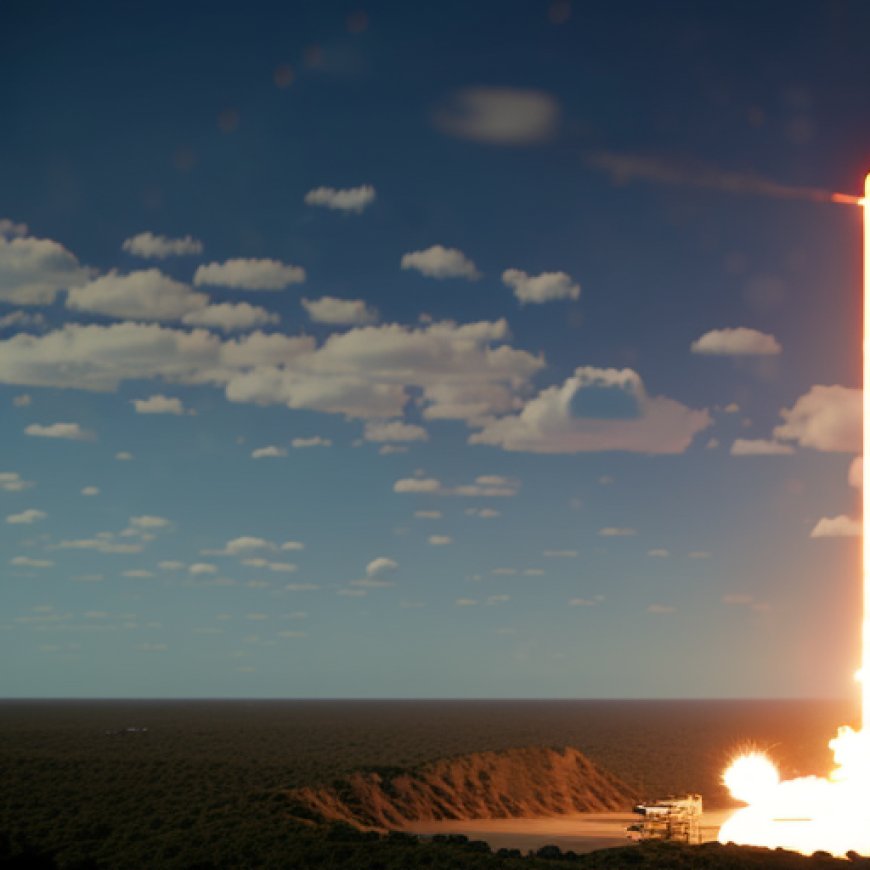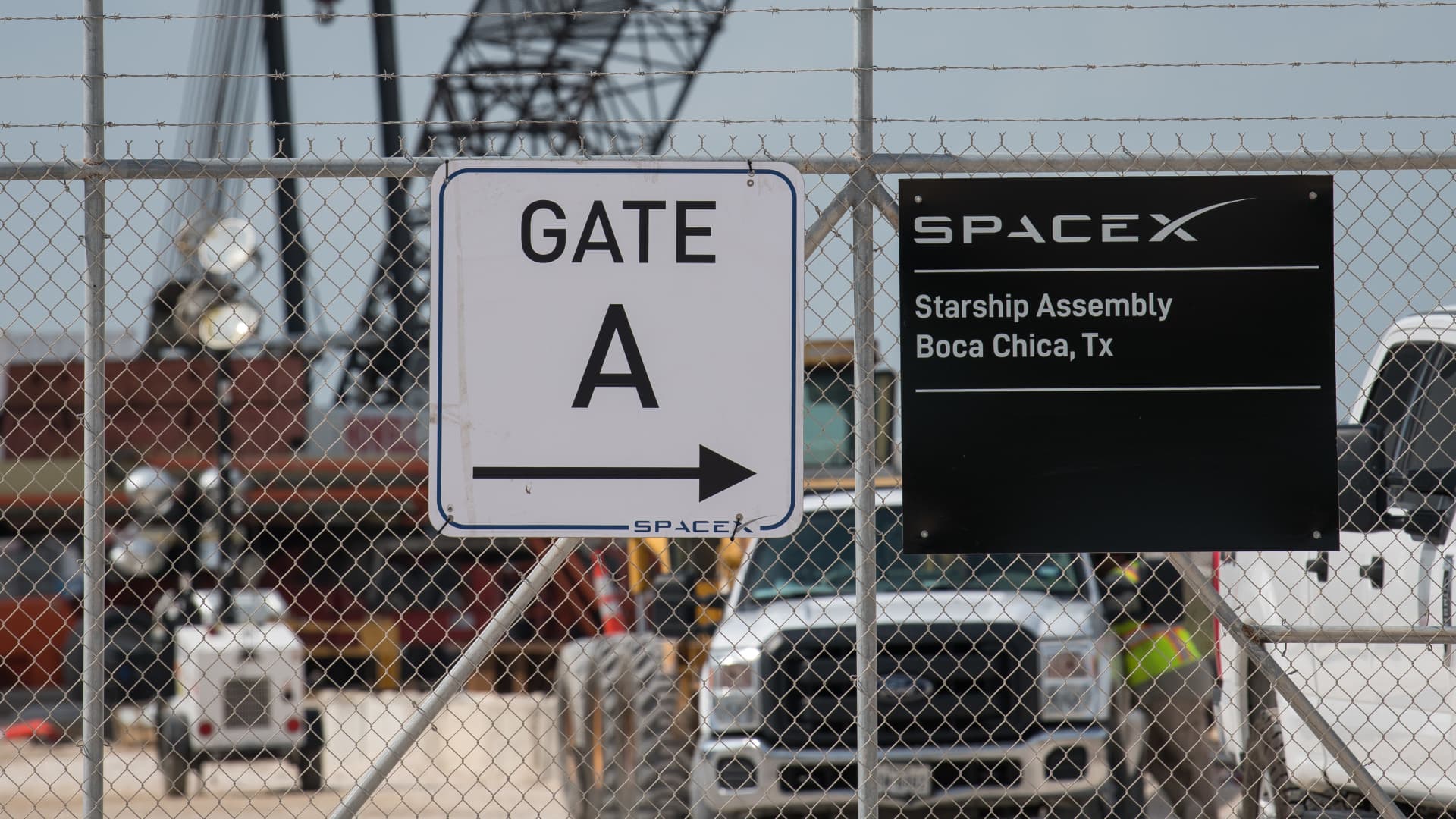SpaceX hasn’t obtained environmental permits for ‘flame deflector’ system it’s testing in Texas
SpaceX hasn't obtained environmental permits for 'flame deflector' system it's testing in Texas CNBC


SpaceX Conducts Full-Pressure Test at Starship Super Heavy Launch Site

Introduction
SpaceX recently conducted a “full-pressure test” of its new “flame deflector” system at the Starship Super Heavy launch site in South Texas. However, it has come to light that the company did not apply for the necessary environmental permits to discharge industrial process wastewater into the surrounding area as required by the federal Clean Water Act.
The Flame Deflector System
The flame deflector, also known as the water deluge system, is designed to diffuse heat, sound, and energy generated during orbital test flights and launches of SpaceX’s largest rocket. This rocket, developed by Elon Musk, aims to transport people and equipment to the moon, Mars, and beyond.
Environmental Concerns
SpaceX has not disclosed the amount of water used during system tests, where the water will run off to, and its contents. The Starbase facility, located in Boca Chica near Brownsville, Texas, is surrounded by wetlands that are crucial for endangered species and indigenous populations.
Lack of Permits
As of July 28, SpaceX had not applied for a Texas Pollutant Discharge Elimination System (TPDES) permit at its Starbase facility, according to the Texas Commission on Environmental Quality (TCEQ). While the site has obtained stormwater permits in the past, the need for a discharge permit is determined by the business owner based on their wastewater management plans.
Unanswered Questions
SpaceX has not provided a reason for proceeding without a permit and has not responded to requests for comment. However, Elon Musk shared a post on social media about the new water deluge system, which included a video showing water flowing from the test site into the surrounding land.
Environmental Impact
Environmental engineer Eric Roesch, who monitors aerospace companies’ compliance with environmental regulations in Texas, explains that industrial process water is regulated under the Clean Water Act. The mixture of heat, silt, and chemicals in wastewater can degrade wetlands and water quality over time. Permits require proper treatment and safe disposal of industrial wastewater.
Potential Consequences
The Environmental Protection Agency states that criminal enforcement actions can be taken against individuals or companies that discharge pollutants into US waters without a permit. Penalties can include prison time and fines ranging from $2,500 to $50,000 per day.
Regulatory Recommendations
The TCEQ recommends submitting applications for wastewater treatment facility construction at least 330 days in advance. Stormwater permits have a shorter processing time.
Previous Incidents
A previous test flight at the Boca Chica site resulted in an explosion, causing concrete debris and particulate matter to impact nearby sensitive habitat. The Federal Aviation Administration (FAA) grounded the SpaceX Super Heavy launch program pending a mishap investigation. The incident also led to a lawsuit against the FAA over environmental impacts and lack of transparency.
Current Evaluation
The TCEQ is currently evaluating the pressurized water system used in SpaceX launch operations to determine if state environmental regulations were violated.
SDGs, Targets, and Indicators
1. Which SDGs are addressed or connected to the issues highlighted in the article?
- SDG 6: Clean Water and Sanitation
- SDG 14: Life Below Water
- SDG 15: Life on Land
The article discusses SpaceX’s failure to apply for environmental permits to discharge industrial process wastewater into the surrounding area. This issue is connected to SDG 6, which aims to ensure availability and sustainable management of water and sanitation for all. It is also connected to SDG 14, which focuses on conserving and sustainably using the oceans, seas, and marine resources. Additionally, it is connected to SDG 15, which aims to protect, restore, and promote sustainable use of terrestrial ecosystems.
2. What specific targets under those SDGs can be identified based on the article’s content?
- SDG 6.3: By 2030, improve water quality by reducing pollution, eliminating dumping and minimizing release of hazardous chemicals and materials.
- SDG 14.1: By 2025, prevent and significantly reduce marine pollution of all kinds, particularly from land-based activities, including marine debris and nutrient pollution.
- SDG 15.5: Take urgent and significant action to reduce degradation of natural habitats, halt the loss of biodiversity, and protect and prevent the extinction of threatened species.
Based on the article’s content, the specific targets that can be identified are related to improving water quality (SDG 6.3), preventing marine pollution (SDG 14.1), and reducing degradation of natural habitats (SDG 15.5).
3. Are there any indicators mentioned or implied in the article that can be used to measure progress towards the identified targets?
Yes, there are indicators mentioned in the article that can be used to measure progress towards the identified targets. These include:
- Discharge of industrial process wastewater into the surrounding area
- Water consumption and runoff from the site
- Impact on wetlands and endangered species
- Compliance with environmental regulations and permits
These indicators can be used to assess whether progress is being made in improving water quality, preventing marine pollution, and reducing degradation of natural habitats.
Table: SDGs, Targets, and Indicators
| SDGs | Targets | Indicators |
|---|---|---|
| SDG 6: Clean Water and Sanitation | 6.3: By 2030, improve water quality by reducing pollution, eliminating dumping and minimizing release of hazardous chemicals and materials. | – Discharge of industrial process wastewater into the surrounding area – Water consumption and runoff from the site |
| SDG 14: Life Below Water | 14.1: By 2025, prevent and significantly reduce marine pollution of all kinds, particularly from land-based activities, including marine debris and nutrient pollution. | – Discharge of industrial process wastewater into the surrounding area – Impact on wetlands and endangered species |
| SDG 15: Life on Land | 15.5: Take urgent and significant action to reduce degradation of natural habitats, halt the loss of biodiversity, and protect and prevent the extinction of threatened species. | – Impact on wetlands and endangered species – Compliance with environmental regulations and permits |
Behold! This splendid article springs forth from the wellspring of knowledge, shaped by a wondrous proprietary AI technology that delved into a vast ocean of data, illuminating the path towards the Sustainable Development Goals. Remember that all rights are reserved by SDG Investors LLC, empowering us to champion progress together.
Source: cnbc.com

Join us, as fellow seekers of change, on a transformative journey at https://sdgtalks.ai/welcome, where you can become a member and actively contribute to shaping a brighter future.







